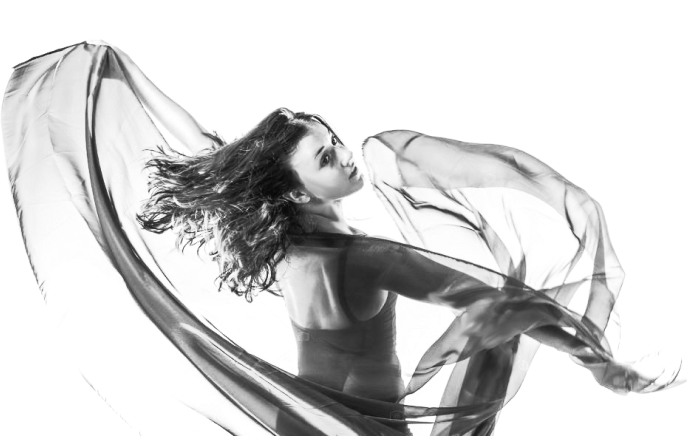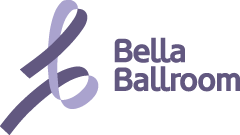
Ballroom Dancing
Tango
The Tango is a dramatic dance style that is popular in the United States and all over the world. It is characterized by sharp, staccato movements and a passionate attitude. Due to its theatrical nature, Tango dancing has been featured in many films including, “Scent of a Woman” with Al Pacino, “Moulin Rouge,” and “True Lies” starring Arnold Schwarzenegger and Jamie Lee Curtis.
Tango is a dance with dramatic flair, using “stalking” and “sneaking” walking characteristics that separate it from the other ballroom dancing styles. It is a very sensual and visually exciting choice for a first wedding dance!
History of the Tango
Tango was originally formulated in Buenos Aires, Argentina among the working-class citizens. The dance roots lie in the Cuban habanera dance, the Argentine Milonga and Candombe. It also has origins tracing back to African rhythms and European music.
While the present forms of Tango really took off in Argentina during the mid-19th century, there are documented records of the dance in Cuba and Spain. Furthermore, there are Tangos with flamenco undertones, which origins point to Europe and it’s minuet-style of dancing. African influences played a crucial role in the initial development of Tango dancing. The instruments and techniques of European immigrants put the finishing touches of the formation of the dance.
The word Tango first appeared in Argentina in the 1890s. The Teatro Opera, an opera house in Buenos Aires, began to include Tango music in their balls in the year of 1902. When it was first introduced, it was just one of many popular dances, but as time went on, it transformed into the most popular. This was due to the spread of the dance from the suburbs to the working-class areas, which were overflowing with many European immigrants. The Tango can therefore be classified as the “melting pot” of all ethnicities influencing one particular dance. To the people of Argentina, Tango music became known as the music of immigrants.
In the seven-year period of 1903 to 1910, one-third of the music released was Tango music, making it very popular. Also, the sheet music for Tango sold very well. By 1910, the release of the Bandoneon reached Buenos Aires from Germany and became part of Tango music. The years 1910-1920 showed an even larger number of Tango records being released.
Europeans were first exposed to the Tango when dancers and musicians from Buenos Aires traveled to Europe. The first major burst of popularity of the dance in Europe occurred in Paris. The cities of London and Berlin followed. By the end of 1913, it had reached New York City. The versions of the Tango that reached outside Argentina were modified to make the dancing partners less close because of the initial shock other dances like the waltz had caused upon their introduction. Nevertheless, the Tango still seemed shocking to many people. In the 1920s, the guidelines were created for the International ballroom style. Shortly thereafter, Tango competed with new styles of dance like the Foxtrot and Samba. Tango began to lose its popularity in Europe, and excitement with dancing as a whole was also lost due to the new affixation of films with the creation of movies.
Although it lost popularity it Europe, it gained ground with the upper and middle class citizens of Argentina. Argentine upper class adopted the dance as their own. The dance shifted from the lower class to the high society dance palaces. Unfortunately, around the year 1929, a combination of the Great Depression and restrictions coming from the overthrow of the government in Argentina caused the decline of the Tango. The next regime made it widely popular again and reversed the fate that seemed to slay the Tango. It had more ups and downs over the decades but finally revived on Paris Broadway in the 1980s.
Tango Dance Today
Although the Tango has had quite the roller coaster of a history, it has received its place as a classic ballroom dance. It is popular internationally and is found in most, if not all, major cities. Each culture that dances the Tango brings its own flavor and spirit to the dance.
The Ballroom style is used for competition and it’s distinctive posture and curriculum focus differentiate the dance from it’s more organic, improvisational and connection focused form known as Argentine Tango. Argentine Tango is danced socially and creates a lead-follow relationship between dancing partners. Today, there are several styles of Tango and Tango music that are roughly divided into subcategories of traditional, new, and alternative. It is believed that dancers who know one style can easily pick up another style of Tango because some of the principles are the same. The Lead and follow, walking steps, and pivoting are principles that all styles of Tango dancing share.
The current ballroom style is divided into the American Style and International Style. Both styles are danced as social and competitive dances. The International style is more globally recognized and accepted as a competitive style. While both styles are danced in a closed dance position, American style ballroom tango allows dancers to separate from a closed position to perform open moves like underarm turns, alternate hand holds, dancing apart, and dancing side-by-side.
Tango dancing has made its way into pop culture by appearing on National and International dance show competitions such as “So You Think You Can Dance” and “Strictly Come Dancing.” It continues to be recognized and celebrated as one of the most passionate dance styles. Tango is also wonderful and different choice for wedding couples looking to spice up their first dance and make their wedding day something to remember.
Tango Music
- “Blue Tango” Columbia Ballroom Orchestra
- “Hernando’s Hideaway” Perez Prado
- “Libertango” Astor Piazzolla
- “Ole Guapa” Caravelli Orchestra
- “El Choclo” Stanley Black Orchestra
- “Santa Maria” Gotan Project
- “Pa’ Bailar – Siempre Quiero Mas” Bajofond feat. Julieta Venegas
- “Tropilla de la Zurda” Carlos Libedinsky
- “La Cumparsita” Julio Iglesias
- “Hernando’s Hideaway” Con Grazia
- “Imma Be” The Black Eyed Peas
- “Sober” Pink
- “Bad Romance” Lady Gaga
- “Jalousie” Tango Orchester Alfred Hause
- “Oh, These Dark Eyes” Tango No. 9
- “Mi Confession” Gotan Project
- “Second Chance” Shinedown
- “Sexy Chick” David Guetta
- “3” Britney Spears
- “Love Story” Taylor Swift
- “Pulmón” Bajofondo Tango Club
- “Goodbye” Kristina Debarge
- “Infiltrado” Bajofondo Tango Club
- “Hernando’s Hideaway” Amerimambo
- “Sweet Dreams” Eurythmics
- “U Got the Look” Prince
- “Tango D’Amore” Lisa de Bo
- “Sombra” Percy Faith
- “Ain’t No Other Man” Chritina Aguilera
- “Hella Good” No Doubt
- “Can’t Be Tamed” Miley Cyrus
- “Traditional Italian Tango” Casa Musica
- “Ecstasy Tango” Stanley Black
- “Tango Jack” Dance Mania
- “I Kissed a Girl” Katy Perry
- “Blue Tango” Montovani
- “Spider of the Night” Geoff Love Orchestra


